
Virtual Art Gallery Tours: My Updated Guide to the Best Online Experiences
Craving art but stuck at home? As an artist, I share my updated guide to the best virtual art gallery tours, online museum visits, and digital art experiences, from immersive 360° walkthroughs to deep dives into masterpieces.
Virtual Art Gallery Tours: My Updated Guide to the Best Online Experiences
Okay, let's be honest. There are days when the idea of putting on actual pants, navigating public transport (or, heaven forbid, finding parking), and then shuffling through crowded museum halls just feels... like too much. Especially after a long week in the studio, covered in paint. My couch calls to me, promising comfort and zero dress code.
But the art lover in me still craves that connection, that moment of standing before something beautiful or thought-provoking. That's where virtual art gallery tours come in. They're not a perfect replacement, no, but they offer something unique, something accessible, and sometimes, just the right dose of inspiration without the logistical headache. So, I've put together my guide to navigating the digital art world and finding the best virtual tours out there.
Why Bother with Virtual Tours Anyway? (Beyond the Pajamas)
Beyond the obvious comfort factor (hello, pajamas!), there are some genuinely good reasons to explore art virtually. As an artist, I find these particularly compelling:
- Accessibility: Physical limitations, distance, the sheer cost of travel and tickets – virtual tours flatten all these barriers. I remember wanting to see a specific exhibition in London years ago but couldn't make the trip; a virtual preview, while not the same, at least let me experience some of it. Anyone, anywhere, can potentially 'visit' the Louvre or the Met. This is huge! It also opens doors for people who might feel intimidated by the formality or crowds of a physical museum space. Art should be for everyone, and virtual access helps make that a reality. Many platforms are also improving accessibility features, sometimes offering things like screen reader compatibility or keyboard navigation.
- Global Exploration: Want to see contemporary art in Tokyo? Or maybe the masters in Florence? Virtual tours let you hop continents in seconds. My personal travel budget is... let's just say, aspirational, so this is a big plus. It's like having a passport to the world's art cities without leaving your living room.
- Focused Viewing: Sometimes, in a busy gallery, it's hard to really see the art. The crowds, the noise, the pressure to keep moving... Online, you can often zoom in to incredible detail, read extensive descriptions, and spend as long as you like with a single piece without feeling rushed or jostled. You can examine brushstrokes, textures, and subtle details in a way that's often impossible in person. I mean, who hasn't wanted to get really close to a Van Gogh brushstroke without setting off an alarm? I remember zooming in on a tiny corner of a Renaissance painting once and discovering a hidden signature I'd never noticed in photos or in person. That high-resolution zoom is a game-changer.
- Previewing & Planning: Planning a real trip? Virtual tours are fantastic for getting a lay of the land and deciding which galleries or specific artworks you absolutely must see in person. It helps you prioritize and make the most of your physical visit.
- Behind-the-Scenes Insights: Some virtual experiences offer insights you wouldn't get on a regular visit. This might include curator talks, conservation close-ups (I'm always fascinated by how artworks are preserved), or artist studio tours that provide context and depth beyond the finished piece. It's like getting a peek behind the curtain, which, as an artist myself, I find endlessly fascinating. You might see how a famous painting was created or learn about the artist's process directly from their workspace. The British Museum online often has great accompanying videos that feel like mini-documentaries.
- Discovering Niche & Independent Art: Beyond the big names, the online world is a treasure trove for discovering smaller galleries, artist-run spaces, or independent artists who might not have a physical presence near you. Virtual tours and online exhibitions from these sources can introduce you to exciting new work and perspectives you'd otherwise miss. It's a fantastic way to broaden your artistic horizons and maybe even find affordable art directly from the source.
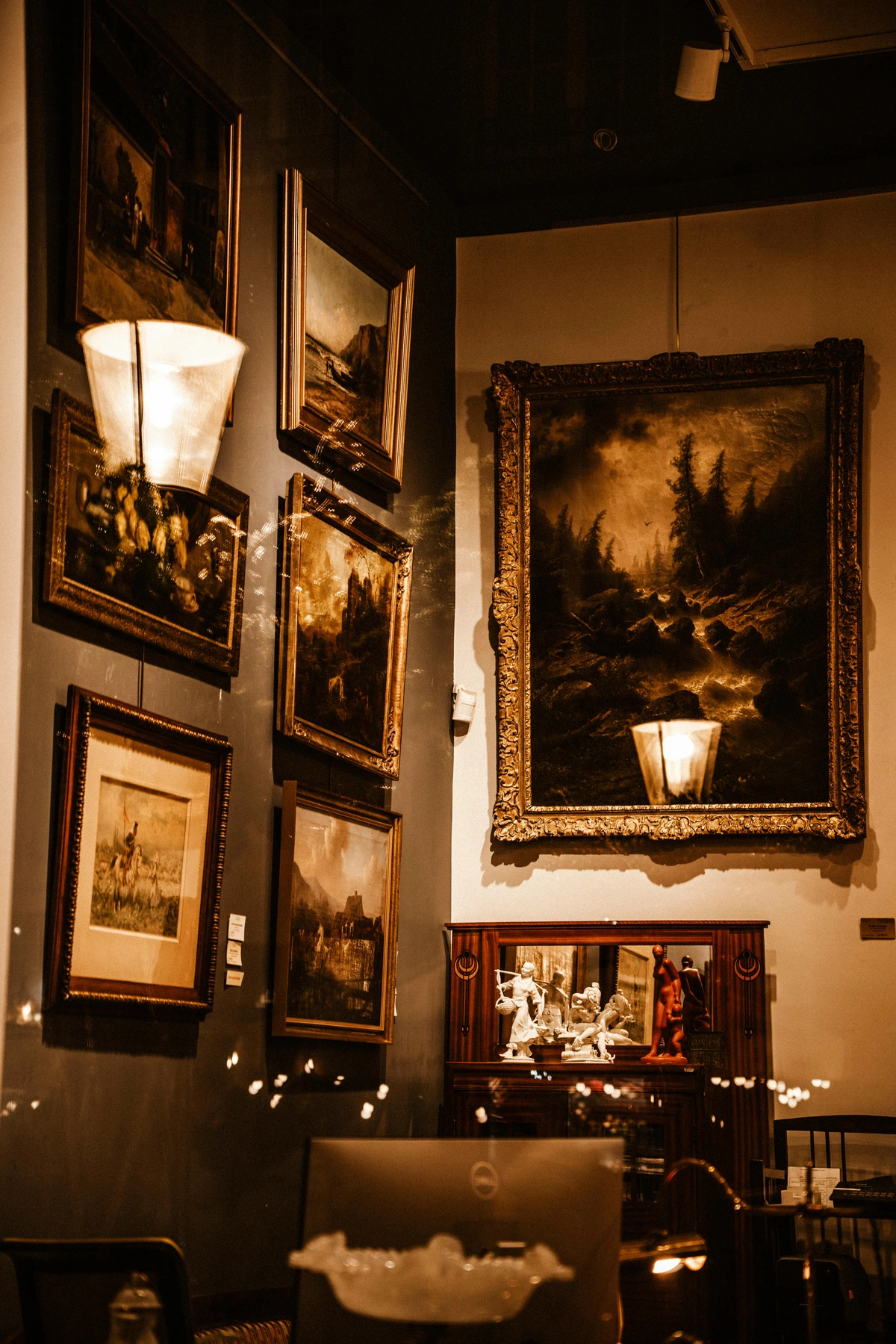
Virtual Tours as a Resource for Artists (My Secret Weapon)
Before we dive into the different types, I want to highlight something crucial for my fellow creators. Beyond just being a convenient way to see art, virtual tours offer unique benefits specifically for artists like myself. Think of it as free, global art school:
- Studying Technique: The high-resolution zoom features allow for incredibly close examination of brushwork, texture, layering, and material use in a way that's often impossible in person due to distance or barriers. It's like a free masterclass in technique.
- Finding Inspiration: Exploring diverse collections and exhibitions from around the world can spark new ideas for themes, compositions, or color palettes. Seeing how different artists approach similar subjects can be incredibly stimulating. Sometimes, a random piece in a virtual gallery halfway across the world is exactly what I needed to break through a creative block.
- Researching Presentation: Observing how museums and galleries present work online – the layout of virtual rooms, the accompanying text, the use of multimedia – can provide valuable insights for artists looking to showcase their own work digitally. How do they make a digital space feel engaging? What kind of information do they provide alongside the image? Seeing how major institutions curate their online exhibitions definitely made me think differently about how I present my own work on my website.
- Discovering Peers: Online platforms and digital-first exhibitions are excellent places to discover contemporary artists and see what's happening in the current art world, even in distant locations. It's a great way to feel connected to the wider art community without leaving my studio.
These insights don't just stay on my screen; they often find their way back into my studio, influencing how I think about my own work and how I want to share it with the world. It's a constant feedback loop between viewing and creating.

What Makes a Virtual Tour "Good"? (My Personal Checklist)
So, how do you separate the digital masterpieces from the pixelated duds? This is subjective, of course, but for me, a great virtual art experience needs to go beyond just pointing a camera at a wall. It needs to feel intentional and engaging. Here's what I look for – the non-negotiables and the delightful extras. But how do you know if a tour is actually good?
- High-Quality Imaging: First off, the visuals. This is where my artist eye kicks in. Can I actually see the brushstrokes? The texture? The subtle shifts in color? Pixelated, low-res images are a dealbreaker. Might as well look at a postage stamp. As an artist, being able to zoom in and study technique is a huge draw. It's like getting a magnifying glass on the artist's hand.
- Intuitive Navigation: Navigation? Oh boy, I've had some nightmares. I don't want to feel like I'm playing a glitchy video game where I constantly bump into invisible walls or get lost in digital corridors. Smooth movement, clear pathways, and easy access to information are key. If I have to spend five minutes figuring out how to turn around, I'm out. It should feel like exploring, not fighting the interface. I've spent enough time wrestling with my own website code; I don't need my art escape to feel like another debugging session.
- Informative Content: Good descriptions, accompanying essays, audio guides, or even embedded videos that tell me more about the art, the artist, or the history are essential. Art isn't just about looking; it's about understanding, and the best virtual tours facilitate that deeper connection. Audio commentary, especially from curators or the artists themselves, can add so much context and personal insight. Using headphones can really enhance this.
- Engagement: Does it make me feel something? Does it spark curiosity? Does it make me want to linger? The best tours replicate some of the wonder of being there, making you want to explore further and learn more. Interactive elements, like clicking on an object to reveal hidden information or a timeline you can scroll through, can really enhance this. Some tours even incorporate ambient sound or music, which can surprisingly deepen the sense of place.
- Bonus Features: Beyond the core viewing experience, things like links to related content (articles about art styles, how to buy art, or even the artist's biography), integrated online shops, or options to share specific artworks can elevate the experience from a simple viewing to a richer engagement.
My Favorite Types of Virtual Art Experiences (with Examples!)
Not all virtual tours are created equal. They come in different formats, each offering a unique way to connect with art. Here are the types I tend to enjoy the most, along with some places doing them well:
1. The High-Tech, 360° Walkthrough
These are the closest you get to being physically present. Think Google Arts & Culture partnerships or dedicated museum platforms. You can 'walk' through the halls, pan around, and zoom in on artworks. The quality varies wildly depending on the technology used, but the best ones are incredibly immersive, giving you a real sense of the space and scale. It's the closest thing to actually being there, minus the sore feet. As an artist, I find these great for understanding the scale of artworks in relation to their environment, something photos often miss.
- Pros: Feels like exploring a physical space, great for getting a sense of the layout and scale of a museum or exhibition.
- Cons: Can sometimes feel a bit sterile compared to being there, navigation can be clunky on less well-designed platforms. And you definitely can't smell the old wood polish.
- Examples:
- Google Arts & Culture: Offers numerous museum tours, including places like the Guggenheim Museum in NYC or the Musée d'Orsay in Paris. Their tours often give a great sense of the grand architecture, like virtually standing in the middle of the Guggenheim's rotunda.
- The National Gallery, London: Their 360° tours let you wander through specific wings and exhibitions with high-quality imaging. I particularly enjoyed their virtual walk through the Renaissance galleries.
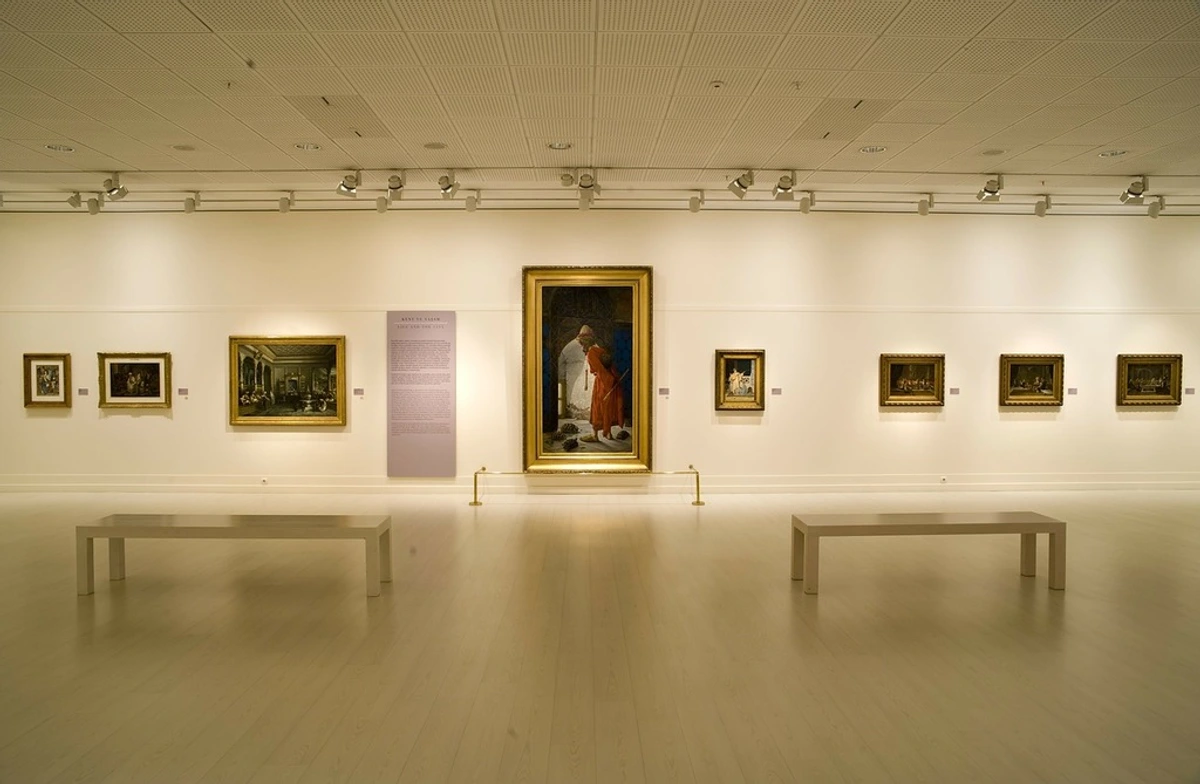
2. Curated Online Exhibitions
Moving beyond replicating a physical space, many galleries and museums create exhibitions specifically for the online environment. These aren't just virtual tours of physical shows; they're digital-first experiences designed to be viewed on a screen. They often combine high-res images with in-depth essays, videos, audio commentary, and interactive elements, focusing on a specific theme, artist, or period. They can offer a depth of information sometimes harder to access in a busy physical gallery. Think of these as interactive digital books about art. For me, these are fantastic for deep dives into specific topics or artists, offering context that might be missed in a quick physical walk-through.
- Pros: Often deeply informative, well-structured, and designed specifically for online viewing. Can offer unique digital content and a narrative flow.
- Cons: Doesn't give you the 'feel' of the physical space or the serendipity of wandering.
- Examples:
- The Metropolitan Museum of Art (The Met): Frequently hosts online exhibitions that delve into specific topics with rich multimedia content, offering a scholarly yet accessible experience. Their exhibition on the art of the Samurai was a particular highlight for me.
- The British Museum: Their online exhibitions cover a vast range of history and culture, often with interactive elements like timelines or maps. Exploring ancient artifacts with detailed explanations from my desk is pretty cool.
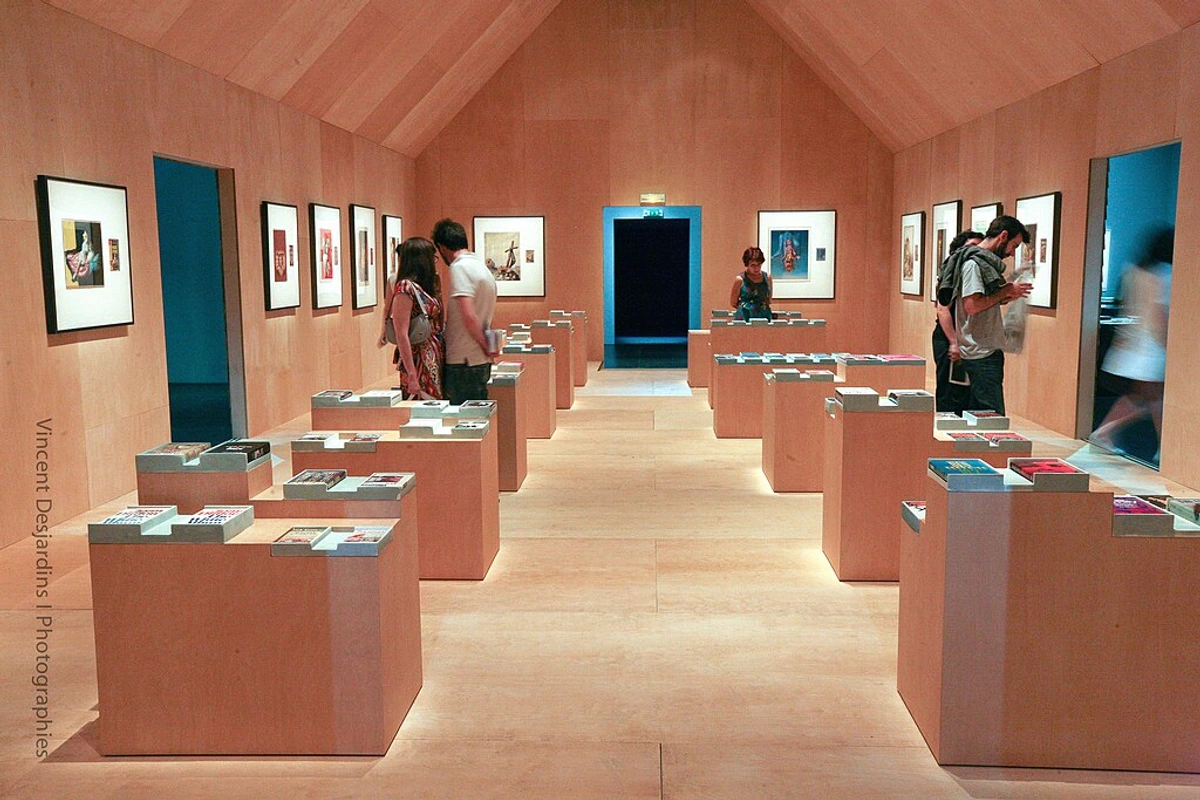
3. Deep Dives into Single Masterpieces or Artists
Some platforms focus intensely on one artwork or artist, offering incredible detail, historical context, and analysis. This is where you can really get lost in the details, like examining every brushstroke of a Van Gogh or understanding the symbolism in a complex piece. It's less about the gallery space and more about dissecting the art itself, often using incredibly high-resolution imagery. As someone who paints, this is invaluable for studying technique. It's like having the artwork under a microscope. This type is my absolute favorite for pure technical study and inspiration.
- Pros: Unparalleled depth and detail, fantastic for learning and close study. Allows you to see details invisible to the naked eye in person.
- Cons: Not a 'gallery' experience, more like an interactive documentary or digital publication.
- Examples:
- Google Arts & Culture's Art Camera: Allows incredibly high-resolution zoom on famous paintings, letting you see details like paint texture and underdrawings. Seeing the individual hairs in a brushstroke on a Rembrandt is mind-blowing.
- The Rijksmuseum: Their "Masterpieces Up Close" feature offers detailed information and high-res images of key works from their collection, including Rembrandt's The Night Watch. The level of detail they provide is truly impressive.
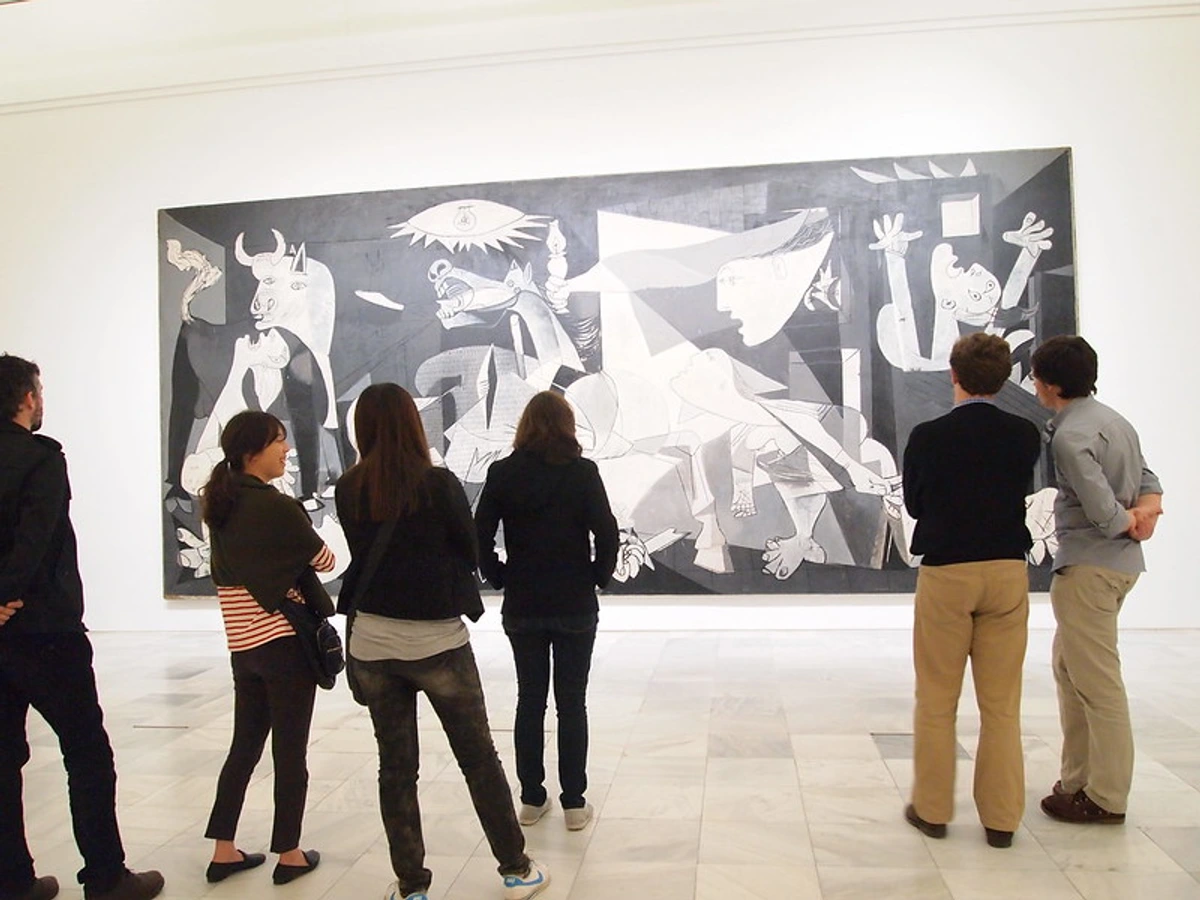
4. Digital-First Art Experiences & Artist Spaces
Beyond traditional museums, the digital realm is also home to art created for the screen or presented in unique online formats. This includes platforms showcasing digital art, NFT art, generative art, interactive installations, or virtual galleries created by artists or collectives specifically to exhibit work that might not exist in a physical space or is best experienced digitally. These can be experimental, interactive, or simply offer a direct connection to contemporary artists working in new mediums. It's a space where the art itself is often born digital. As an artist exploring digital tools myself, these are fascinating for seeing what's possible when the medium is the screen.
- Pros: Access to art forms and spaces that don't exist physically, often cutting-edge and experimental, direct connection to contemporary artists.
- Cons: Quality and presentation vary widely, can require specific software or platforms, less focused on historical context.
- Examples:
- Online Art Platforms (e.g., Artsy, Saatchi Art): Many have virtual viewing rooms or digital exhibitions, sometimes featuring works specifically presented for the online space.
- Artist Websites & Collectives: Some artists and collectives create immersive digital experiences on their own sites or dedicated platforms to showcase their work in unique ways. Exploring a generative art piece that changes based on user interaction is a truly digital experience.
- Dedicated Digital Art Platforms: Sites focusing purely on digital art, including NFT marketplaces (though these vary wildly in quality and focus), can offer exhibitions of screen-based work.
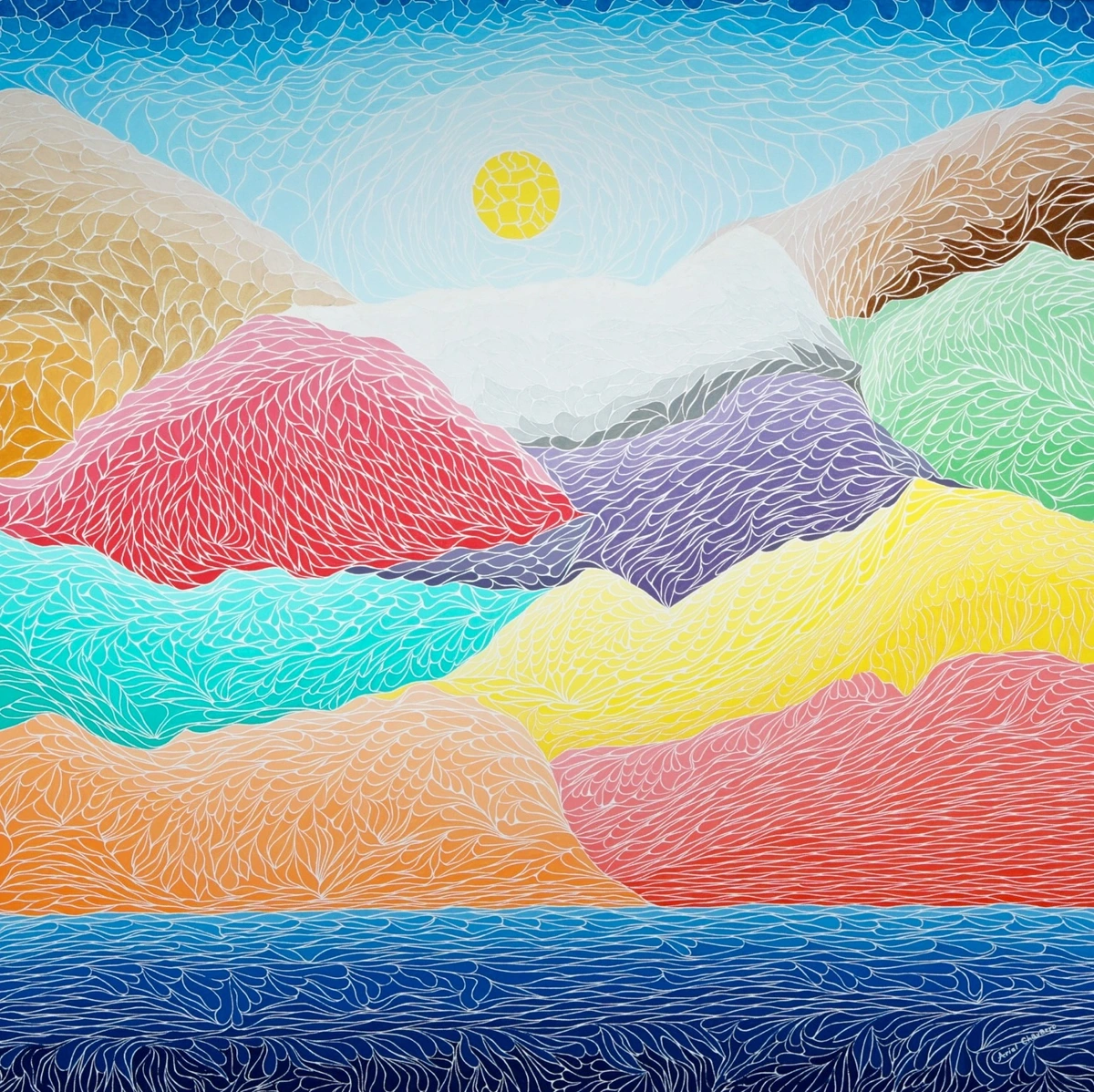
5. VR Experiences
If you have the tech, VR (Virtual Reality) can be truly transportive. Imagine standing 'inside' a Rothko painting or walking through a historical exhibition as if you were there. It's still early days for widespread VR art experiences, but the potential is immense for creating a sense of presence and immersion that other formats can't match. It's particularly interesting for experiencing large-scale installations or performance art documentation. It's the closest you'll get to feeling the scale of a massive artwork without being in the room. For me, VR is the most exciting frontier for experiencing the physicality of art virtually.
- Pros: Most immersive experience possible without being there, can offer a powerful sense of presence.
- Cons: Requires specific hardware (VR headset), quality varies, can sometimes feel isolating or even disorienting. Screen fatigue can also be a real issue. And you might bump into your coffee table.
- Examples:
- Museum of Other Realities (MOR): A virtual art gallery specifically designed for VR, showcasing digital art and installations. It's a space built for VR art.
- Some major museums (e.g., Tate Modern): Have experimented with VR components for specific exhibitions or collections, sometimes available via apps. Experiencing a large sculpture in VR can give you a better sense of its form than a flat screen.
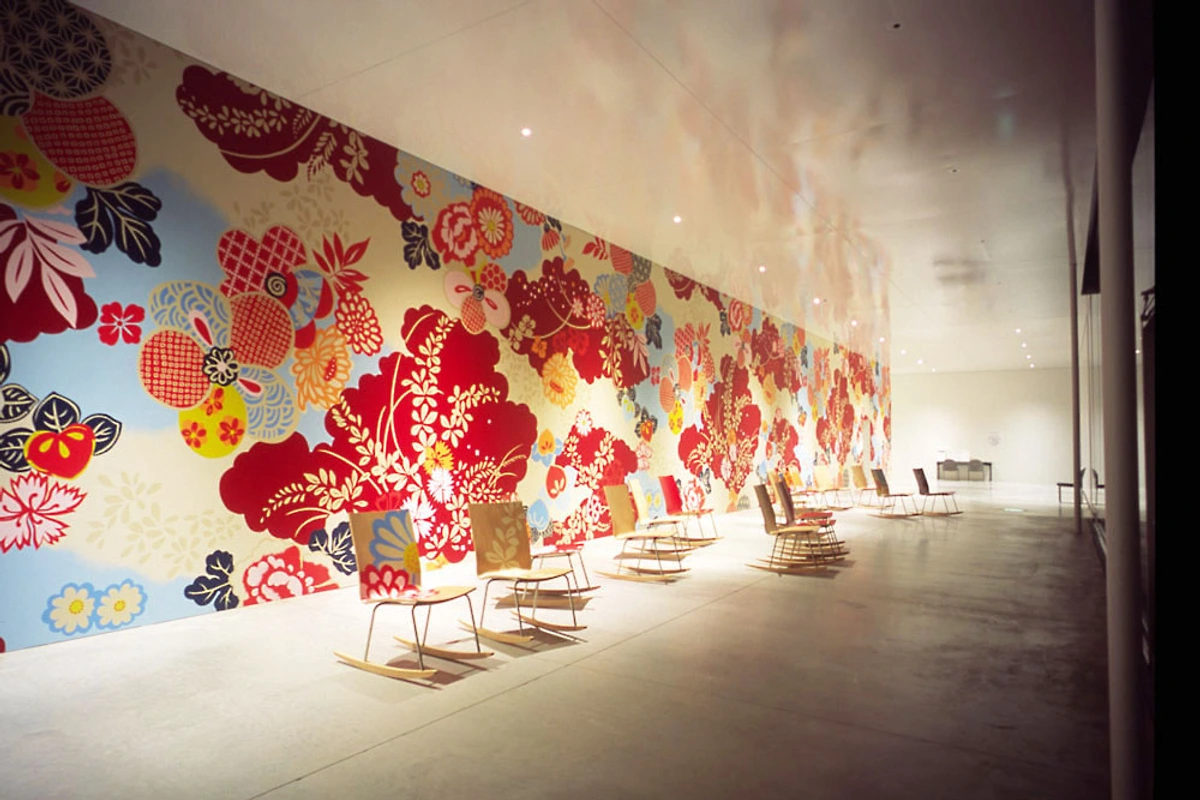
Tips for a Great Virtual Art Tour Experience (From My Couch)
Ready to give it a try? Here are a few things I've learned to make the most of it. Think of these as my personal rituals for digital art appreciation:
- Set the Mood: Turn off distractions. Close those other 50 tabs. Maybe put on some music (classical? ambient? whatever fits the art!). Make it an event, not just another tab in your browser. I always make sure I have my favorite tea or coffee ready. Light a candle – treat it like a real visit.
- Use a Big Screen: As mentioned, a phone screen just doesn't cut it for appreciating detail. The bigger, the better. Cast it to your TV if you can! It makes a huge difference. Seeing a masterpiece blown up on your living room wall? Pretty cool.
- Use Headphones: If the tour includes audio commentary, music, or ambient sound, headphones can significantly enhance the immersive quality and help you focus. It helps block out the sound of my cat demanding attention.
- Don't Rush: Just like a real gallery visit, take your time. Linger on pieces that catch your eye. Read the information provided. Click on everything! Digital spaces can hide treasures too.
- Explore: Don't just follow the main path. Look for side rooms, click on everything, see where it takes you. Digital spaces can have hidden corners too. Sometimes the most interesting discoveries are off the beaten path.
- Take Notes (Mental or Physical): What did you like? What surprised you? What colors or compositions caught your eye? Jotting down thoughts can help solidify the experience and make it more active. As an artist, I find taking notes helps me remember details I might use in my own work or think about differently.
- Consider Online Learning: Many platforms offering virtual tours also have online courses or workshops. If a virtual visit sparks your interest in a particular style or artist, look for ways to deepen your knowledge virtually. As an artist, I find seeing how others teach and share their craft online really inspiring.
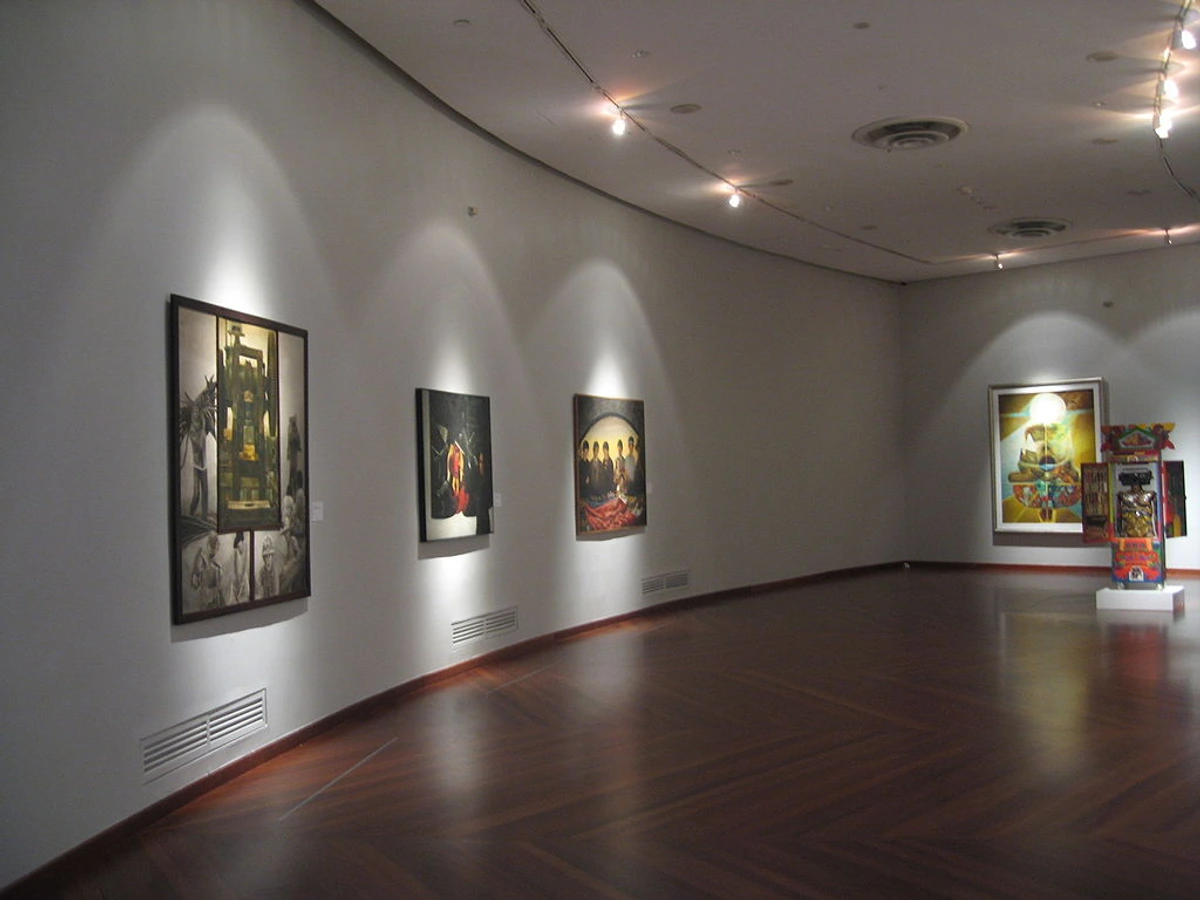
Technical Considerations, Potential Downsides, and What's Still Missing
Okay, now that we've talked about the tech stuff and what makes a good tour, how do you actually do it right from your couch? While virtual tours offer amazing access, it's worth a quick note on the tech side and some potential drawbacks. A good experience often requires a stable internet connection and a relatively modern browser or app. This is crucial to load those massive image files quickly and handle interactive elements smoothly. Some older tours can be glitchy or require specific plugins – I've definitely clicked into a promising link only to be met with a frustratingly slow load time or a navigation system that feels like it was designed for a dial-up modem. It's like trying to appreciate a masterpiece through a pixelated fog.
Using a larger screen (laptop, tablet, or casting to a TV) significantly enhances the visual experience compared to a phone. Details matter when you're looking at art, and a tiny screen just doesn't do it justice. Also, consider checking the source of the tour – is it the official museum site (usually highest quality) or a third-party platform (can vary)?
Beyond the tech, virtual tours can lead to screen fatigue if you spend too long staring at a monitor. My eyes definitely start to protest after a while. There's also the potential for information overload or decision fatigue when faced with the sheer volume of options available online. They also lack the serendipity of a physical visit – that unexpected moment of stumbling upon a piece you'd never heard of that just hits you. And, of course, they can't replicate the sensory experience – the scale of a massive canvas, the subtle texture of a sculpture, the ambient noise of a busy gallery, or the specific way the light hits a painting. The smell of an old building? Forget it. These are real limitations, and it's important to acknowledge that virtual isn't a perfect substitute, but rather a complementary way to engage.
It's also worth noting the effort museums put into these. Translating a physical space or collection into a compelling digital experience isn't just pointing a camera. It involves complex photography, 3D scanning, curatorial decisions about what information to include, and significant technical development. It's a challenge to capture the essence of being there.
The Future of Virtual Art Experiences
The technology behind virtual tours is constantly evolving. We're likely to see more sophisticated AI integration that could offer personalized guided tours or deeper analysis of artworks. More advanced interactivity, perhaps allowing viewers to manipulate virtual objects or explore spaces in entirely new ways, is on the horizon. And the potential for collaborative viewing spaces, where you can 'visit' a virtual gallery with friends represented by avatars, could bring back some of that missing social element. It's an exciting time to see how technology will continue to shape how we access and experience art. Maybe one day we'll have VR art parties?
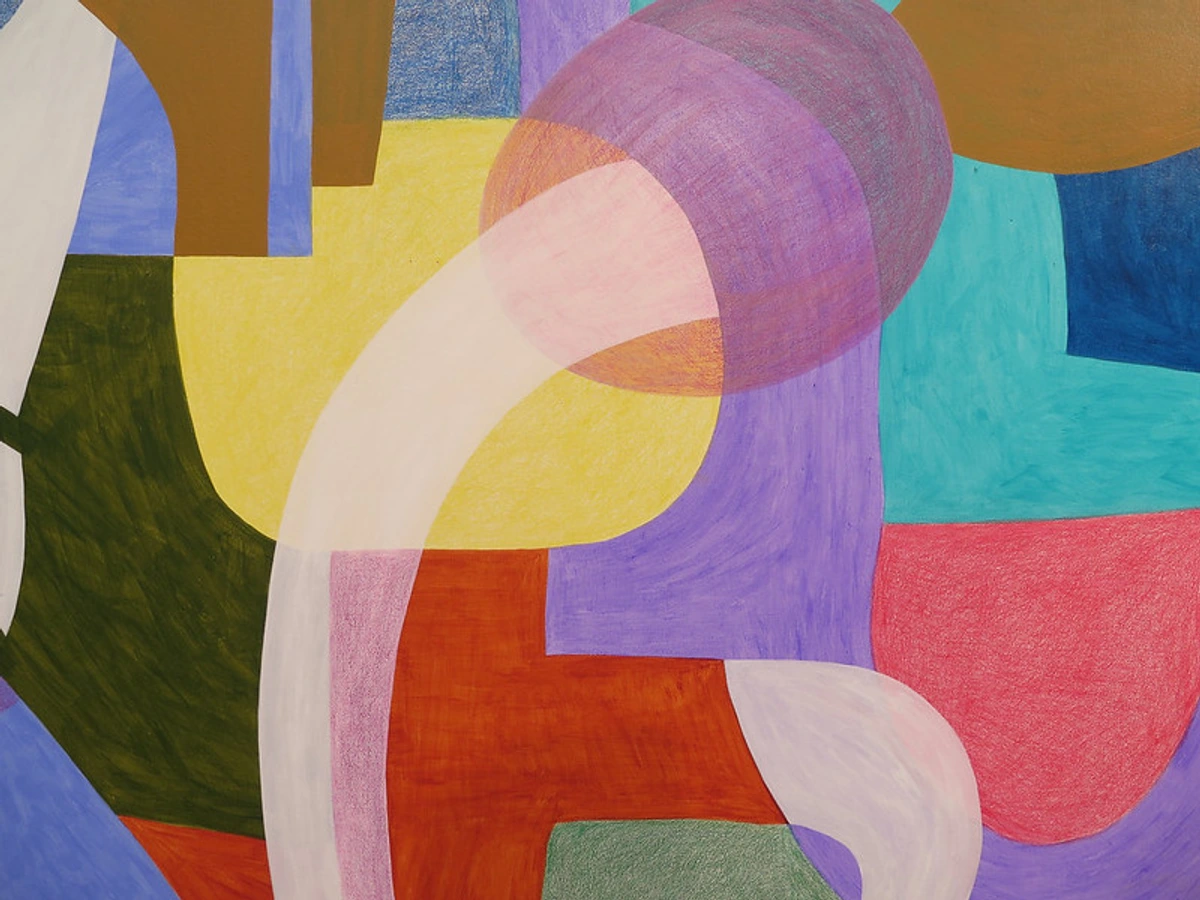
Is it the Same as Being There? (Spoiler: No, But That's Okay)
Let's circle back to the big question. No, a virtual tour is not the same as being there. And that's okay. It can't replicate the sheer scale of a massive canvas, the subtle texture of a sculpture, the ambient noise of a busy gallery, or that serendipitous moment of stumbling upon a piece you'd never heard of that just hits you. It also can't replicate the feeling of walking through the grand doors of an institution like the Louvre or the Met. The smell of the old building, the specific way the light hits a painting – those sensory experience details are lost.
And let's talk about the social side. Visiting a gallery with friends, discussing a piece, grabbing coffee afterwards – that's a big part of the experience for many. Virtual tours are often solitary. However, you can make them social! Consider screen-sharing with a friend, discussing via video call while you both explore the same virtual space, or joining online communities dedicated to discussing virtual art experiences.
But it offers something different. It offers access, convenience, and the ability to explore at your own pace, in your own space. It's a tool, another way to connect with the incredible world of art. As an artist, I find virtual tours fascinating. They make me think about how art is experienced, how scale and texture translate (or don't) to a screen, and how technology can both enhance and detract from the viewing process. It's a different kind of 'seeing', and it even influences how I think about presenting my own work online. The intellectual connection can be just as strong, sometimes even stronger with the added information, but the visceral, emotional impact of standing before a physical masterpiece is still unmatched.
If you're curious about bringing more art into your life, whether virtually or physically, remember that it's a personal journey. Find what resonates with you. Maybe it's exploring famous paintings online, or maybe it's finding affordable art to hang on your own walls. There's no right or wrong way.
FAQ: Your Virtual Art Tour Questions Answered
Q: Are virtual art tours free?
A: Many are! Especially those offered by major museums and initiatives like Google Arts & Culture. Some platforms or special exhibitions might require a fee, similar to a ticket.
Q: Do I need special equipment?
A: For basic 360° tours or online exhibitions, usually just a computer or tablet with internet access. For VR experiences, you'll need a VR headset.
Q: Can I buy art through virtual tours?
A: Some museum or gallery websites linked from virtual tours might have online shops where you can buy prints or merchandise. Dedicated online art platforms often integrate viewing rooms with purchasing options. If you're looking to buy art, check out my guide on where to buy art or browse my own art for sale.
Q: Are virtual tours good for kids?
A: Absolutely! Many museums offer kid-friendly virtual content. It's a great way to introduce them to art in a relaxed environment.
Q: How do virtual tours compare to looking at art books?
A: Virtual tours offer a sense of space and scale that books can't, and often include interactive elements or audio commentary. Books offer higher resolution and a tactile experience. They're different, complementary ways to engage with art.
Q: Are virtual tours always available?
A: It depends. Some virtual tours of permanent collections are available indefinitely. Others, especially those tied to temporary physical exhibitions, might only be online for a limited time. Always check the museum or platform's website for availability.
Q: Are virtual tours accessible for people with disabilities?
A: Many platforms are improving accessibility, offering features like keyboard navigation, screen reader compatibility, captions for videos, and adjustable text sizes. However, accessibility varies widely, so it's best to check the specific platform's features.
Q: How do I find the best virtual tours?
A: Start with major institutions like those mentioned (Louvre, Met, National Gallery, Rijksmuseum) and explore their websites or Google Arts & Culture. Art news websites and blogs often review new online exhibitions. Look for tours that emphasize high image quality, clear navigation, and rich accompanying information.
Q: Can I use images from virtual tours for my own art or projects?
A: Generally, no. Images displayed in virtual tours are usually protected by copyright. You can use them for personal viewing and inspiration, but reproducing, distributing, or using them commercially (even as reference for your own work you intend to sell) is typically not allowed without permission. Always check the platform's terms of use or the museum's copyright policy.
So, next time you're craving some culture but the couch is just too comfortable to leave, consider a virtual art gallery tour. You might be surprised by what you discover. And hey, if it inspires you to bring some art into your own space, you know where to find me /buy. Or perhaps you'd like to visit my museum in 's-Hertogenbosch sometime? You can also learn more about my journey as an artist. What virtual art experiences have you enjoyed? Let me know in the comments below!




